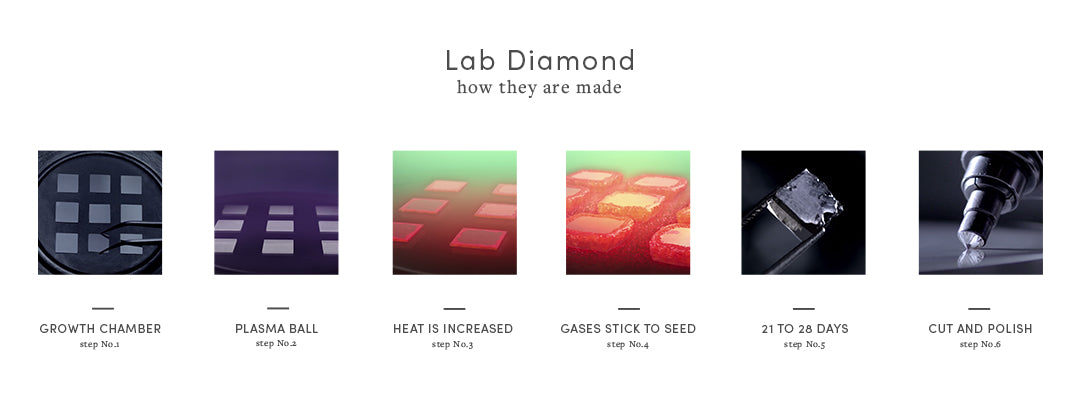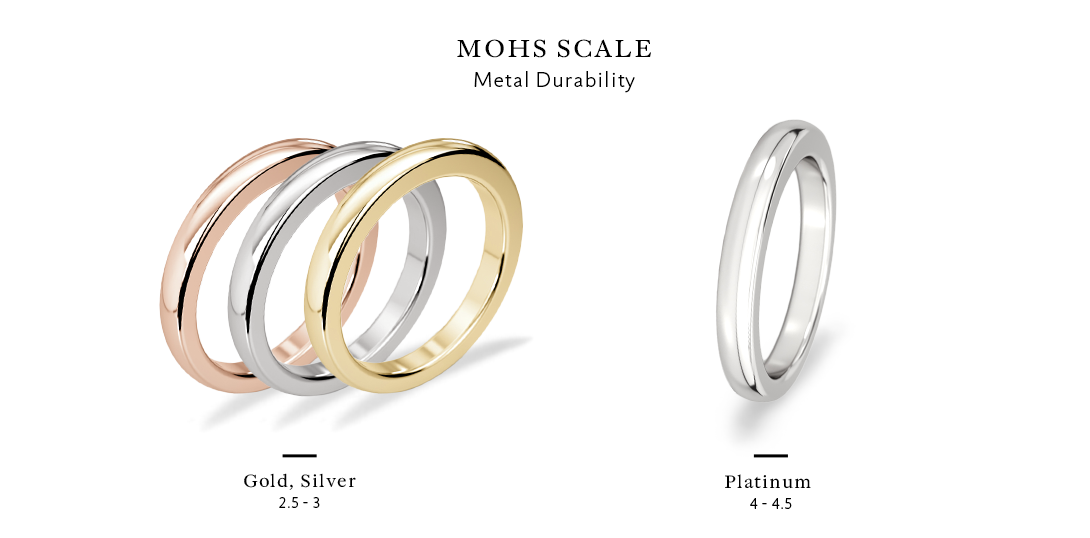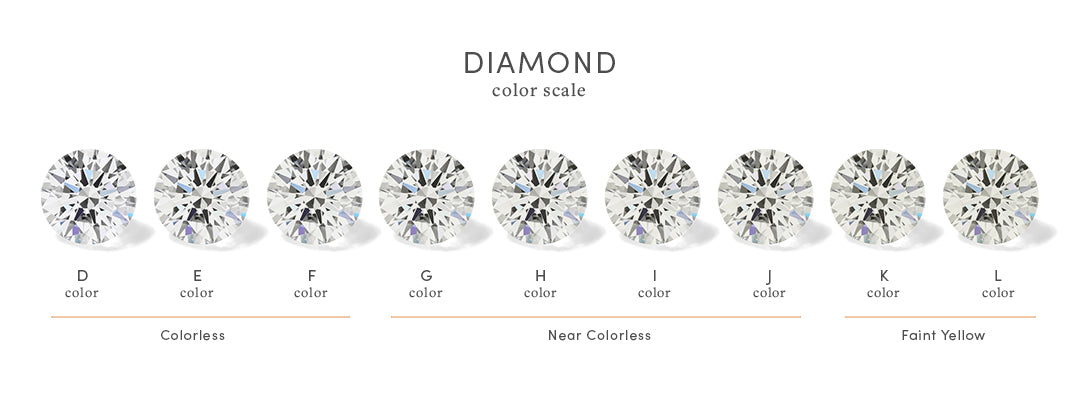Diamond Simulants vs. Lab Created Diamonds

There are countless types of diamonds on the market that can have you comparing stones for hours. The diamond industry is so vast and sometimes the lines can blur between real diamond rings and synthetic/lab diamond rings. Moreover, even for novice gemologists, it's hard to decipher between lab grown diamond rings and diamond simulants. To simplify your search, we will guide you through the most popular types of diamond simulants and lab created diamonds. From how these stones form, to their resemble to naturally grown diamonds, and figuring out which type of diamond is perfect for you, our diamond experts have you covered.
TABLE OF CONTENTS
What are Diamond Simulants?
Diamond simulants, also known as imitation diamonds, are stones that look like real diamonds but have different physical properties. Popular diamond simulants are the following: cubic zirconia and moissanite.

Cubic Zirconia
Commonly referred to as CZs, cubic zirconia is a synthetic gemstone made of the cubic crystalline form of zirconium dioxide, discovered in 1892. Naturally grown cubic zirconia is rare and all cubic zirconia used in jewelry is man-made.

Moissanite
Moissanite was first Discovered by Nobel Prize-winning French scientist Henri Moissan in the creator of a fallen meteor in 1893. Moissan first thought that he found diamonds in the meteor site, but later realized that the stone was made of silicon carbide. As genuine moissanite is incredibly rare, the moissanite diamond used in jewelry is man-made.
What are Lab Created Diamonds?
Unlike diamonds that formed over the course of millions of years deep within the earth under extreme conditions, lab created diamonds are made in a controlled environment. These synthetic diamonds can be made in as little as two weeks (depending on carat size) and are just as real as their naturally formed counterparts.
Lab diamonds have the same physical, chemical, and visual properties as natural diamonds. Unless you are a trained gemologist with cutting edge technology, lab grown diamonds are virtually indistinguishable from naturally grown diamonds. The most significant difference between the two is their origin. Synthetic diamonds come from a laboratory whereas the other was mined from the ground.
How are Lab Created Diamonds Made?
Lab created diamonds can be made two ways:
-
Chemical Vapor Deposition
This technique, often shortened to CVD, uses natural diamond particles to build a diamond. The natural diamond particles are placed in a CVD machine which fills with carbon gas and gets heated to extreme temperatures, making the carbon molecules break apart. As the molecules vaporize, they bind to the diamond seed and slowly build layers until a larger diamond is formed.
-
High Pressure High Temperature
High Pressure High Temperature: This technique, often shortened to HPHT, uses a diamond seed to form a diamond. The diamond seed is placed in a HPHT machine filled with pure carbon. Extreme heat and pressure are used to melt the carbon and a rough diamond begins to form around the seed.
Regardless of which diamond growing technique was used, the produced diamonds are ready to be cut, polished, and mounted in jewelry.

What is the Difference Between Diamond Simulants and Lab Grown Diamonds?
While good quality diamond simulants such as cubic zirconia and moissanite may look like real diamonds, they are very different from lab grown diamonds.
Moissanite and Cubic Zirconia versus Lab Diamonds
-
Physically:
We all know that diamonds are the hardest natural substance and a 10 on the Mohs scale of hardness. Since lab grown diamonds have the same physical properties as naturally grown diamonds, they are also a 10. Moissanite ranks at an 9.25, while cubic zirconia is an 8.5 on the scale. While these numbers are not low, diamond simulants will become more easily damaged than actual diamonds.
-
Visually:
Who isn't captivated by the outstanding brilliance of diamonds? A lab grown diamond will produce this signature sparkle while diamond simulants cannot achieve this brilliance because light travels differently throughout those stones. Moissanite is known to have a “disco-ball” effect because when light hits the stone it makes rainbow flashes.
-
Color Grade:
As one of the 4C's of diamond grading, color grade refers to the amount of yellow or brown hues that a white diamond has. While natural diamonds can come in an array of colors, so do lab grown diamonds. Cubic zirconia is colorless and standard moissanite is about a K color. However, some jewelers sell premium quality moissanite, which has better color grades.
-
Clarity Grade:
Another member of the 4 C's of diamond grading, clarity grade refers to the number of imperfections in the stone. Natural and synthetic diamonds can have an array of imperfections. Cubic zirconia, on the other hand, does not have any imperfections, and moissanite has a midrange clarity grade.
-
Cut Grade:
Cut grade refers to how well cut a diamond is. Each stone can have different cut grades depending on the skill of the person who cut them. The cut grade heavily determines how a diamond reacts to light.
-
Carat Weight:
The final member of the 4C's refers to how heavy the diamond is. Lab grown diamonds and diamond simulants can come in any carat weight.


Are Diamond Simulants and Lab Created Diamonds Real Diamonds?
Diamond simulants can look like real diamonds to the naked eye, but they lack the remarkable durability and brilliance of real diamonds. Alternatively, lab created diamonds are just as real as diamonds that took millions of years to form. Moreover, lab diamonds are real because it shares the exact physical, chemical, and visual properties to natural diamonds.
Are Lab Grown Diamonds the Same as Lab Created Diamonds?
To answer this question briefly, yes. Other names lab diamonds might be referred to are: lab created, lab made, man made, and lab grown. Stones that are labeled with the aforementioned names are also all considered real diamonds.
What are the Benefits of Purchasing Lab Created Diamonds?
-
Less Expensive:
Lab grown diamonds come at a fraction of the price of naturally formed diamonds. This means that you can shop for an exceptionally stunning diamond without draining your savings.
-
Genuine Diamonds:
As we discussed earlier, a lab created diamond is just as real as naturally grown diamonds.
-
Durable:
Unlike diamond simulants that can become more easily worn, your lab diamond will withstand daily wear and always look beautiful.
-
Minimal Environmental Impact:
Synthetic diamonds and diamond simulants require no mining. That means fewer hands are involved in the stone making process.
Where Can I Buy Lab Created Diamonds?
With Clarity sells an amazing array of lab created diamonds, naturally grown diamonds, and preset diamond rings. All of our man made diamonds come with IGI certification that detail the diamond’s exact characteristics so you can always shop with confidence. Explore our loose lab created diamonds and beautiful engagement ring settings that you will cherish for a lifetime.
FAQs
What are diamond simulants?
What are lab created diamonds?
How are lab created diamonds made?
What is the difference between diamond simulants and lab grown diamonds?
What are the benefits of lab created diamonds?









